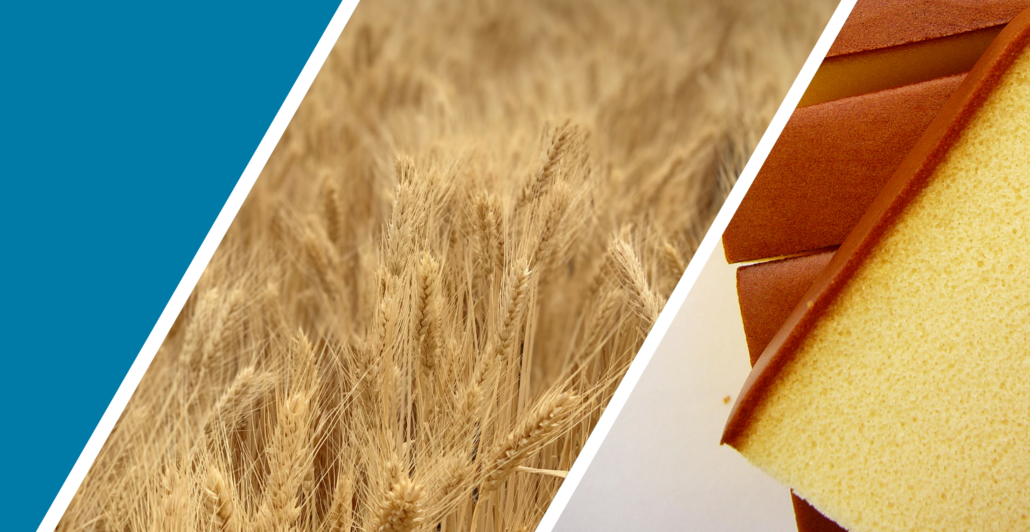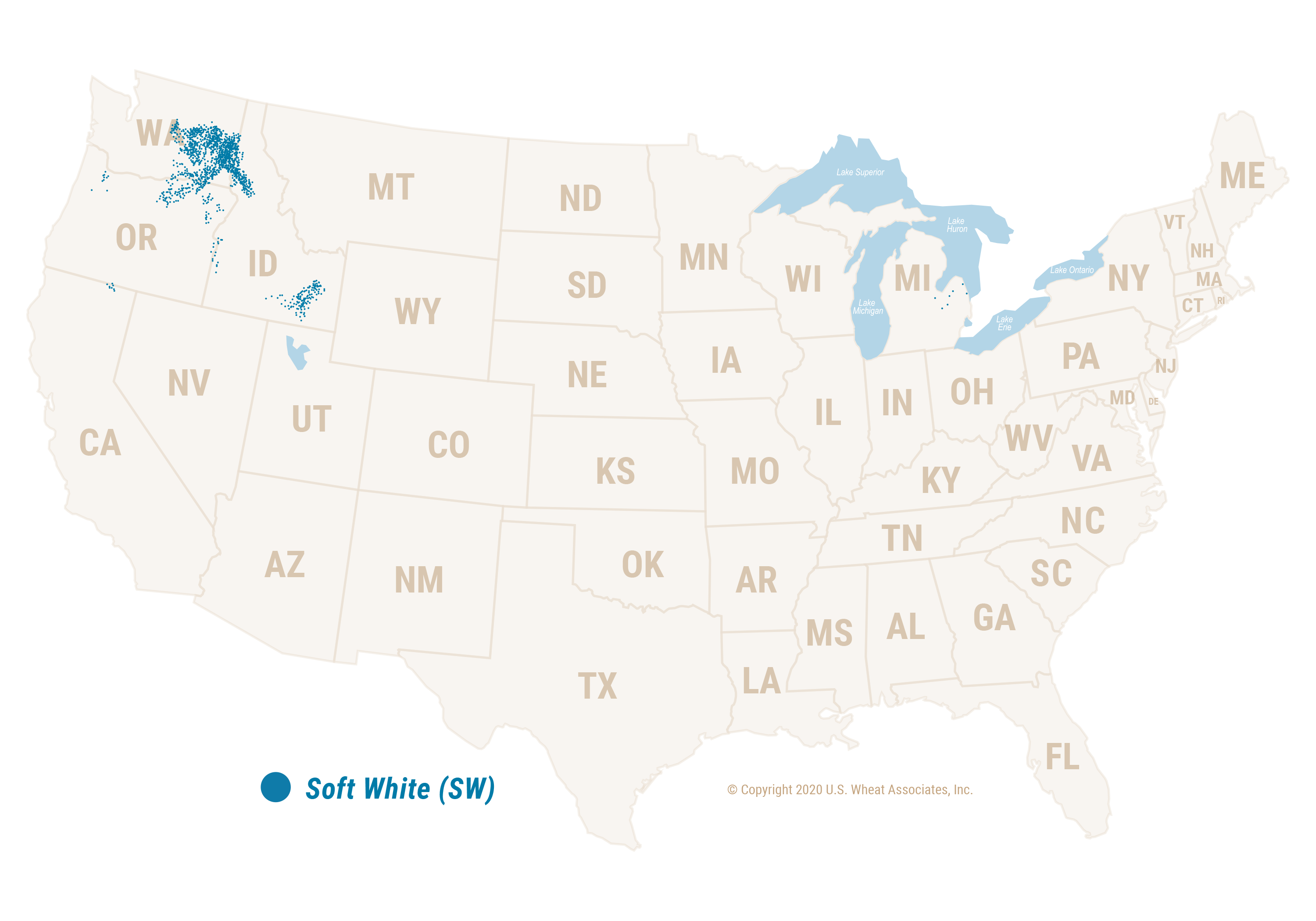From specialty products such as sponge cakes or Asian noodles to blending with HRS for improving bread color, U.S. soft white (SW) wheat flour has the versatility to improve the quality of a wide variety of products. It has a low protein of 8.5% to 10.5% (12% mb), low moisture and weak gluten. SW includes winter and spring varieties increasing the protein range and functionality within the class.
For the miller, SW delivers excellent results. Arriving at the mill with an average moisture of less than 10%, an average test weight of more than 80 hectoliter mass and a low quantity of screenings, SW wheat provides the millers every opportunity for high flour extraction. The lower wheat moisture allows the miller to temper the wheat to a lower average target moisture optimizing flour extraction, particle size and color.
For the baker, low moisture content creates an advantage by optimizing water absorption and product quality to the consumer. The finer particle size may increase the rate of water absorption, decreasing mix time and improving production efficiencies. With the fine particle size and starch characteristics, SW flour creates a unique and tender texture for many end-products.
Where is U.S. Soft White grown?
U.S. soft white (SW) is grown primarily in the Pacific Northwest (PNW) with approximately 80% exported and shipped via Pacific ports.
Please select your preferred language, report, and year, and click View Reports.



